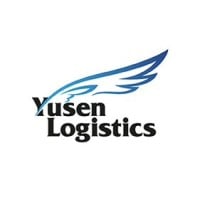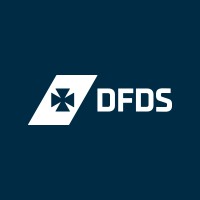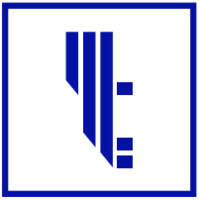
FM Logistic Company Cyber Security Posture
fmlogistic.comWith more than 28 000 collaborators worldwide, FM LOGISTIC ensures the optimization of the global supply chain: warehousing (computerized inventory management, order processing etc), co-packing, food co-manufacturing and industrial manufacturing, transportation / distribution. From production to consumption, responsiveness, flexibility, quality and safety make FM LOGISTIC a real creator of value added.
FM Logistic Company Details
fm-logistic
10,001+ employees
134839
none
Transportation, Logistics, Supply Chain and Storage
fmlogistic.com
Scan still pending
FM _2951544
In-progress
Between 200 and 800
This score is AI-generated and less favored by cyber insurers, who prefer the TPRM score.
 FM Logistic Global Score
FM Logistic Global Score.png)

FM Logistic Company Scoring based on AI Models
| Model Name | Date | Description | Current Score Difference | Score |
|---|---|---|---|---|
| AVERAGE-Industry | 03-12-2025 | This score represents the average cybersecurity rating of companies already scanned within the same industry. It provides a benchmark to compare an individual company's security posture against its industry peers. | N/A | Between 200 and 800 |
FM Logistic Company Cyber Security News & History
| Entity | Type | Severity | Impact | Seen | Url ID | Details | View |
|---|
FM Logistic Company Subsidiaries

With more than 28 000 collaborators worldwide, FM LOGISTIC ensures the optimization of the global supply chain: warehousing (computerized inventory management, order processing etc), co-packing, food co-manufacturing and industrial manufacturing, transportation / distribution. From production to consumption, responsiveness, flexibility, quality and safety make FM LOGISTIC a real creator of value added.
Access Data Using Our API

Get company history
.png)
FM Logistic Cyber Security News
2025 FM Resilience Index: Denmark on Top of the World Again; FM Adds New Cybersecurity Data
Online and interactive, the 2025 FM Resilience Index helps global companies make strategic business decisions such as where to build new ...
Top 10 Most Resilient Countries
The 2025 FM Resilience Index, released last week by insurer FM Global, ranks 130 countries and territories by the resilience of their business environments.
FM Nirmala Sitharaman reviews banking sector's operational and cybersecurity preparedness amid rising tens
Finance Minister Nirmala Sitharaman on Friday chaired a high level meeting with the Managing Directors and CEOs of Public and Private Sector ...
FM Logistic Chooses the CyberArk Identity Security Platform to Secure Its Digital Transformation and Help Bolster Supply Chain Resilience
CyberArk (NASDAQ: CYBR), the identity security company, today announced that FM Logistic, a global supply chain management service, ...
Cyber vulnerabilities detection system in logistics-based IoT data exchange
Modern-day digitalization has a profound impact on business and society, revolutionizing logistics. Supply chain digitalization improves transparency, ...
Budget 2024: From skilling to logistics, industry expects significant announcements from FM
The industry expects the finance minister to focus heavily on economic growth, providing a significant boost to entrepreneurship and ironing ...
Budget 2025 Expectations: FM to present Budget on Feb 1- Taxpayers, experts call for higher deductions, lower tax outgo
Experts said that tax payers are eagerly waiting for any potential changes that could offer relief. There is also a strong demand for increased exemptions and ...

FM Logistic Similar Companies

Yusen Logistics
Yusen Logistics is the insight-driven, customer-centric logistics partner to global business. We deliver this through an extended range of services from International Freight Forwarding and Contract Logistics to Supply Chain Solutions and Industry insights covering the full supply chain. We invest

KTZ Express
KTZ Express JSC multimodal company is a sales center of cargo transportation and logistics services for “Kazakhstan Railways” JSC National Company. KTZ Express provides a full range of transport and logistics services in all types of transportation on all routes, integrates transportation by rail, s

DFDS LOGISTICS NL
DFDS is ontstaan in 1866 toen 4 Deense stoomschipbedrijven samengevoegd werden tot Det Forenede Dampskibs-Selskab. Door de oprichting van DFDS werd het eenvoudiger om op internationaal niveau handel met elkaar te bedrijven. Dit zorgde ervoor dat ondernemers in alle soorten en maten (economisch) kond

Transcom Limited
Transcom’s legacy began in 1885 with tea plantations, a group built on the core values of business excellence coupled with ethical business practices. Today, Transcom stands as one of the most diversified and largest professionally managed business conglomerates in Bangladesh with a presence acros

ADNOC Logistics & Services
ADNOC L&S is the region’s largest shipping and integrated logistics company and a global energy maritime logistics leader with a world-class asset base. It is the maritime logistics arm of ADNOC Group, a key enabler to ADNOC’s strategy and a catalyst for Abu Dhabi’s growth and diversification, deliv

GEODIS
GEODIS is a leading global logistics provider acknowledged for its expertise across all aspects of the supply chain. As a growth partner to its clients, GEODIS specializes in four lines of business: Global Freight Forwarding, Global Contract Logistics, Distribution & Express Transport, and European

Frequently Asked Questions
Explore insights on cybersecurity incidents, risk posture, and Rankiteo's assessments.
FM Logistic CyberSecurity History Information
How many cyber incidents has FM Logistic faced?
Total Incidents: According to Rankiteo, FM Logistic has faced 0 incidents in the past.
What types of cybersecurity incidents have occurred at FM Logistic?
Incident Types: The types of cybersecurity incidents that have occurred include .
Incident Details
What are the most common types of attacks the company has faced?
Additional Questions
What Do We Measure?
















Every week, Rankiteo analyzes billions of signals to give organizations a sharper, faster view of emerging risks. With deeper, more actionable intelligence at their fingertips, security teams can outpace threat actors, respond instantly to Zero-Day attacks, and dramatically shrink their risk exposure window.
These are some of the factors we use to calculate the overall score:
Identify exposed access points, detect misconfigured SSL certificates, and uncover vulnerabilities across the network infrastructure.
Gain visibility into the software components used within an organization to detect vulnerabilities, manage risk, and ensure supply chain security.
Monitor and manage all IT assets and their configurations to ensure accurate, real-time visibility across the company's technology environment.
Leverage real-time insights on active threats, malware campaigns, and emerging vulnerabilities to proactively defend against evolving cyberattacks.




